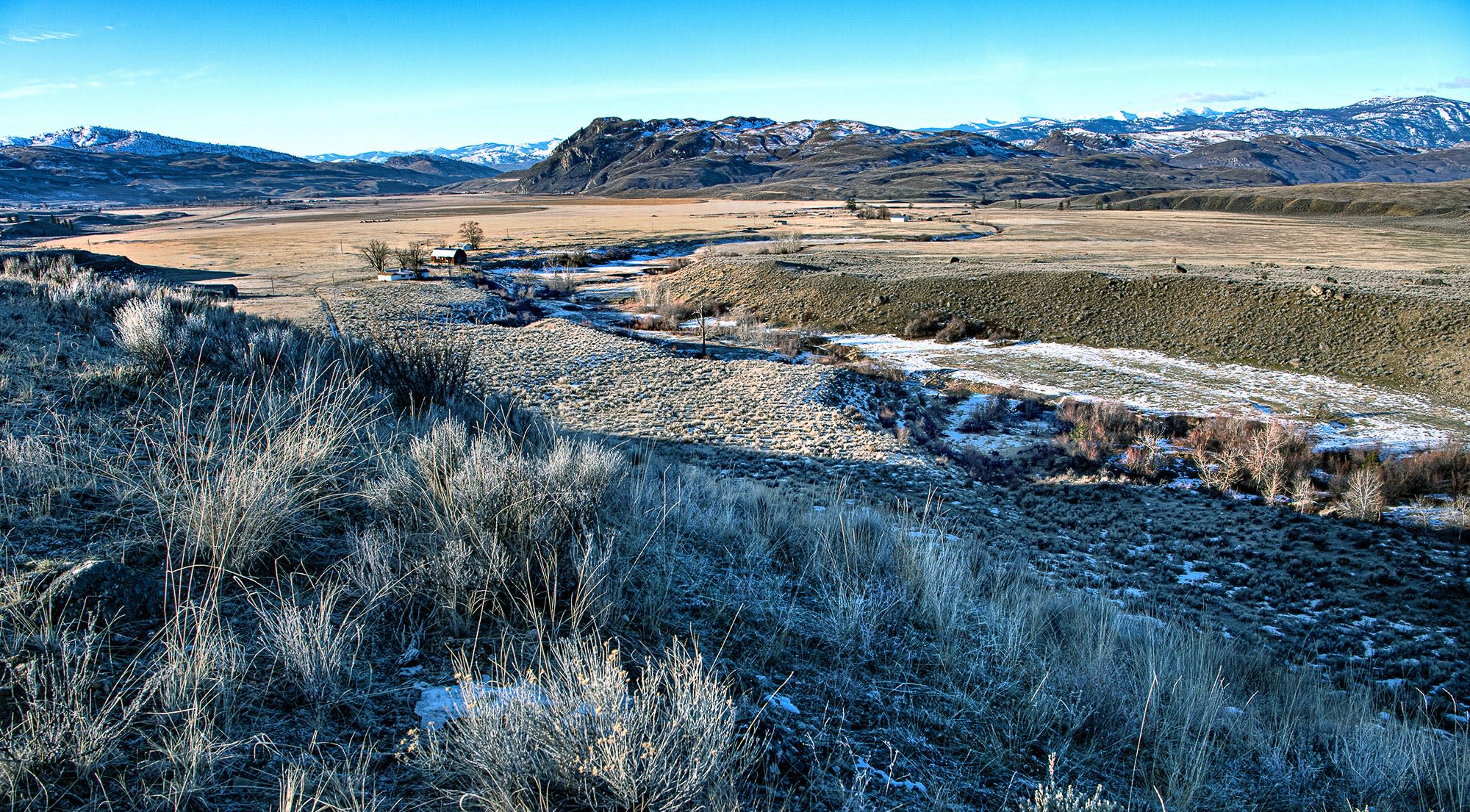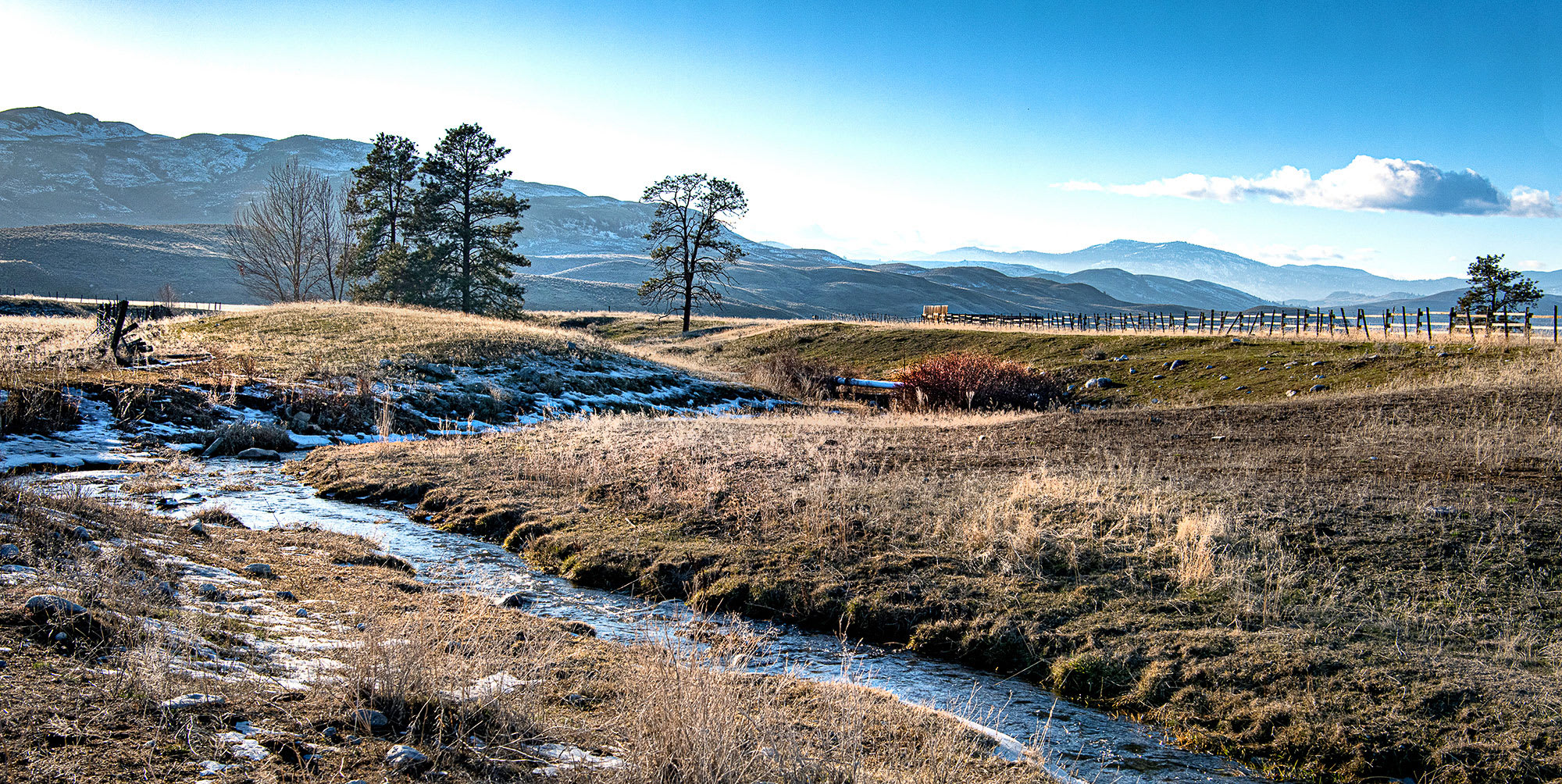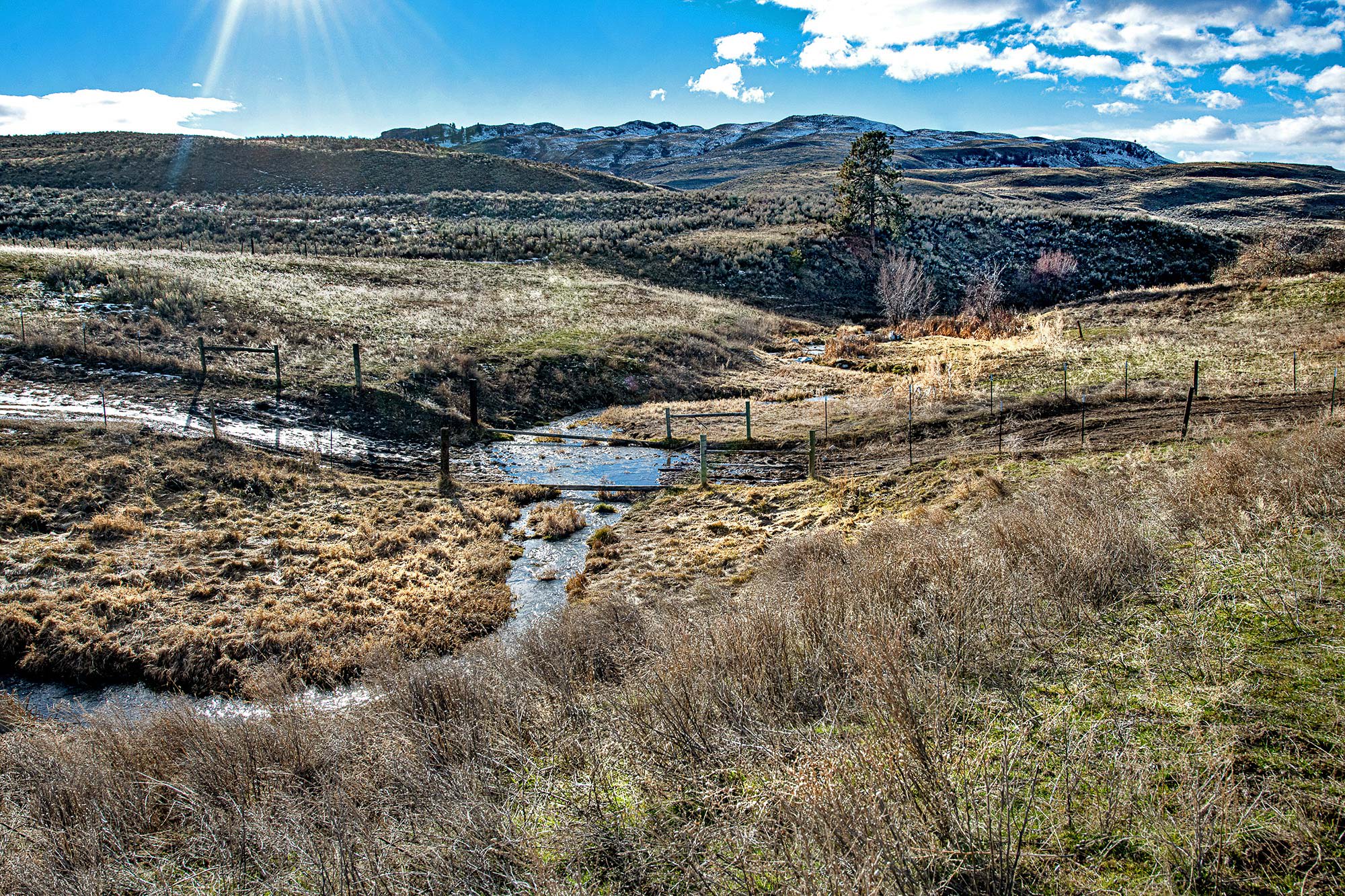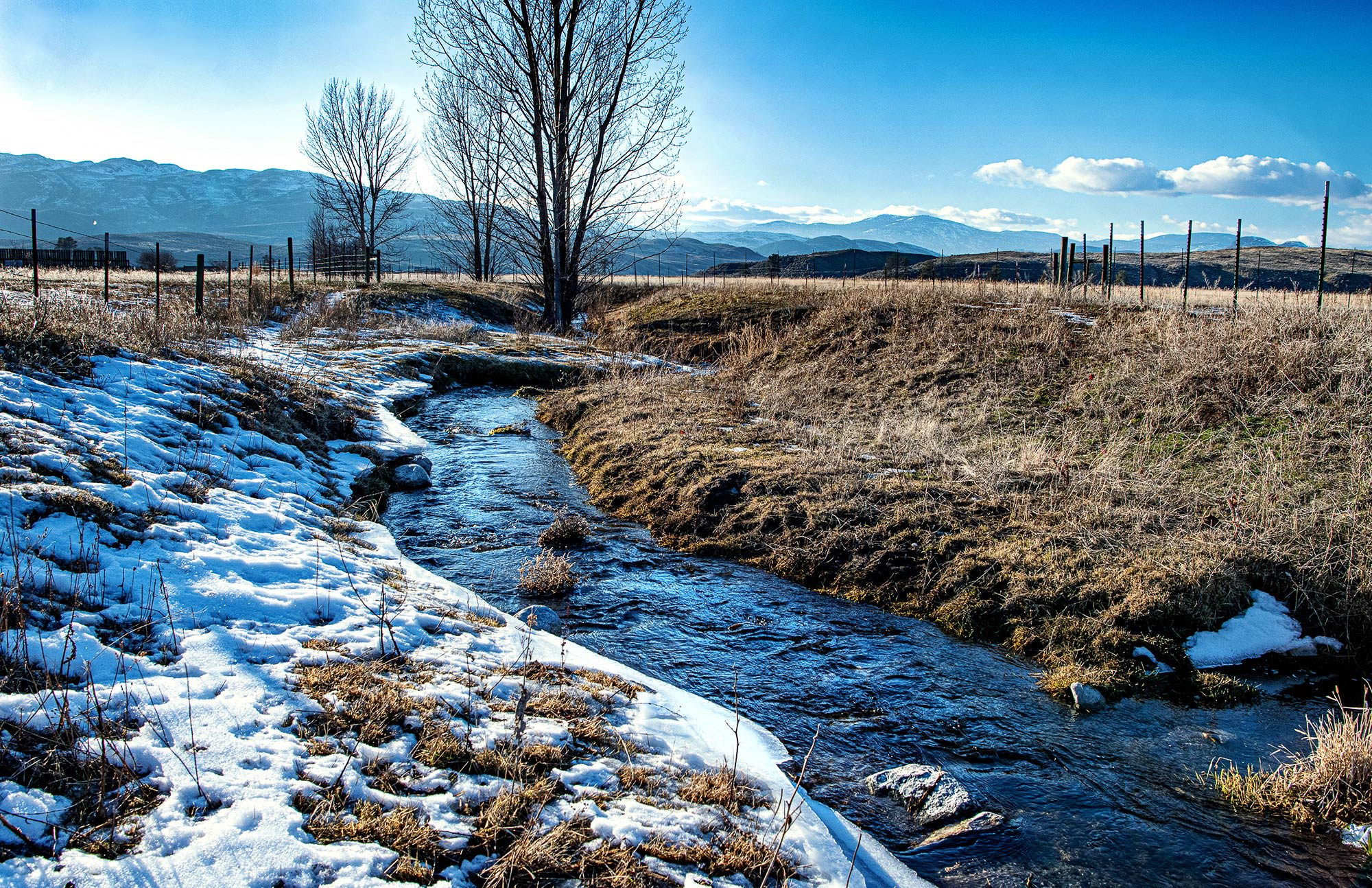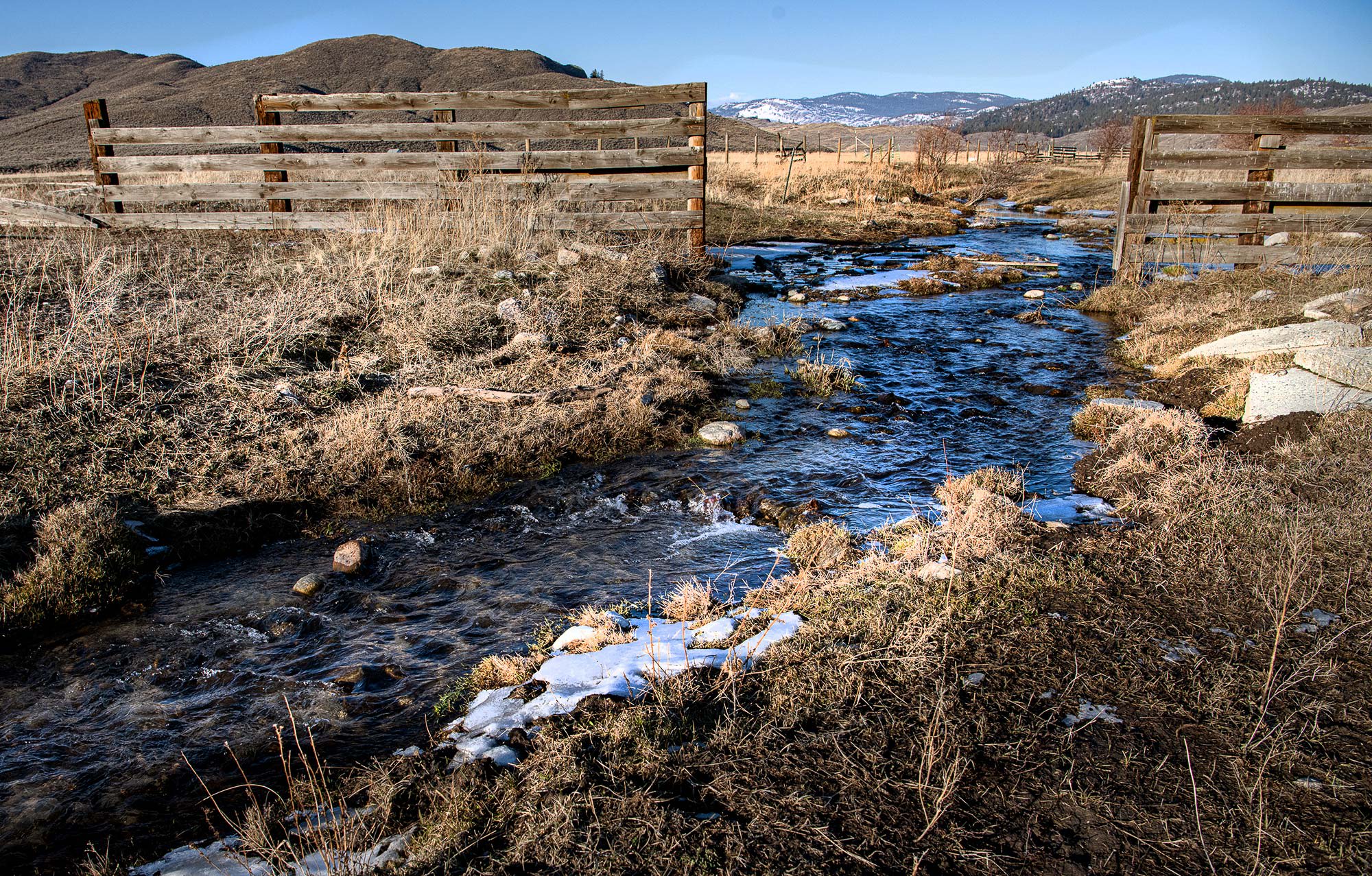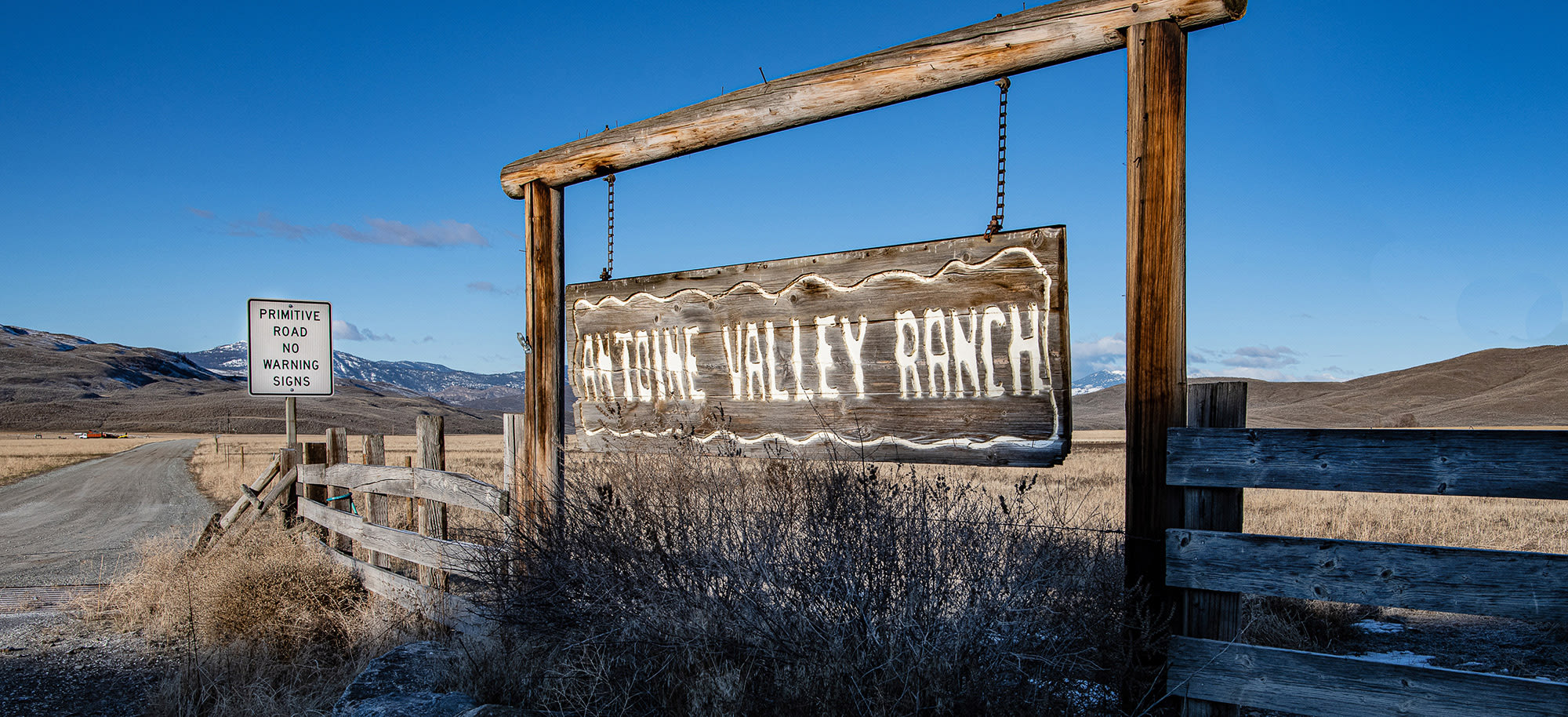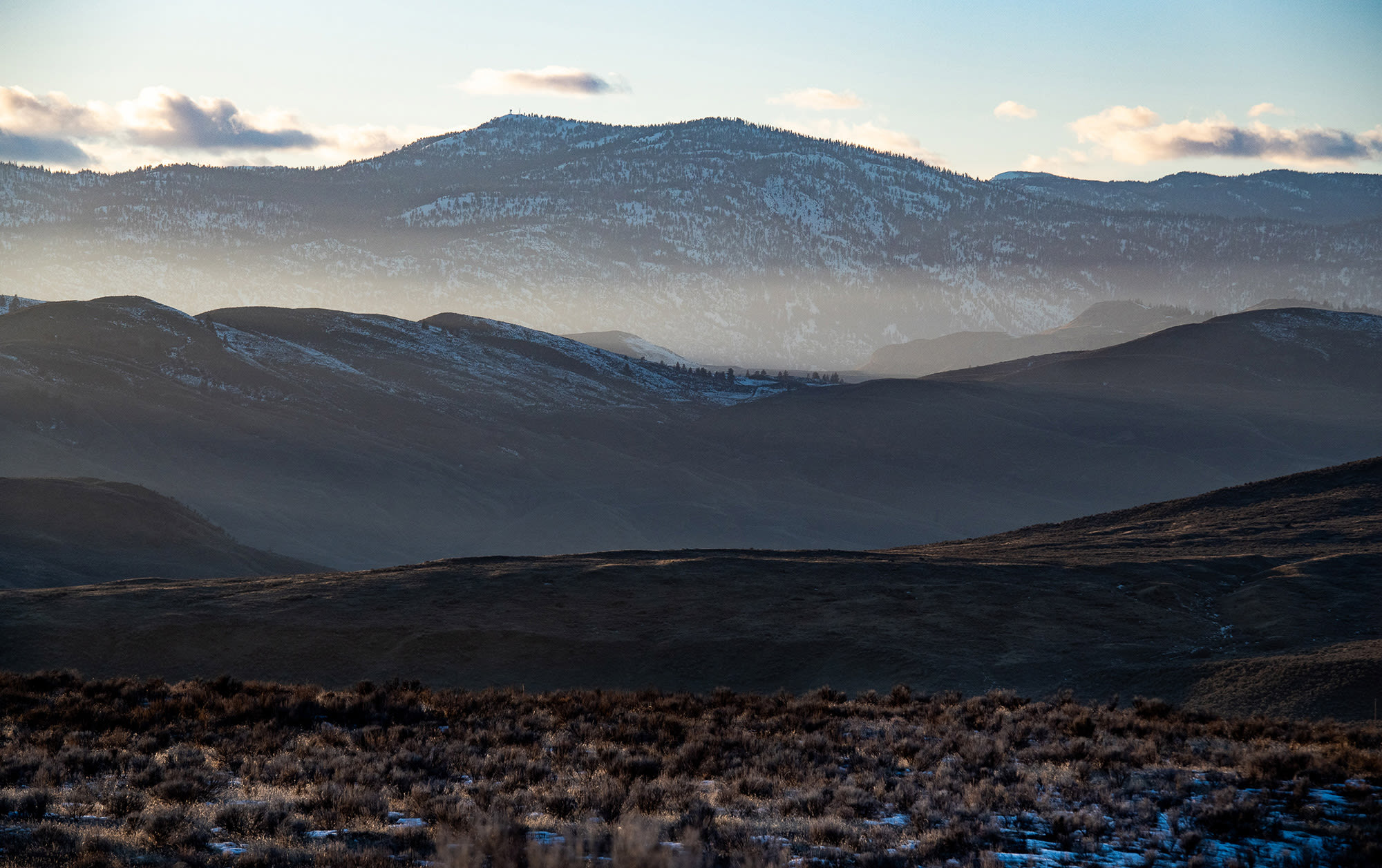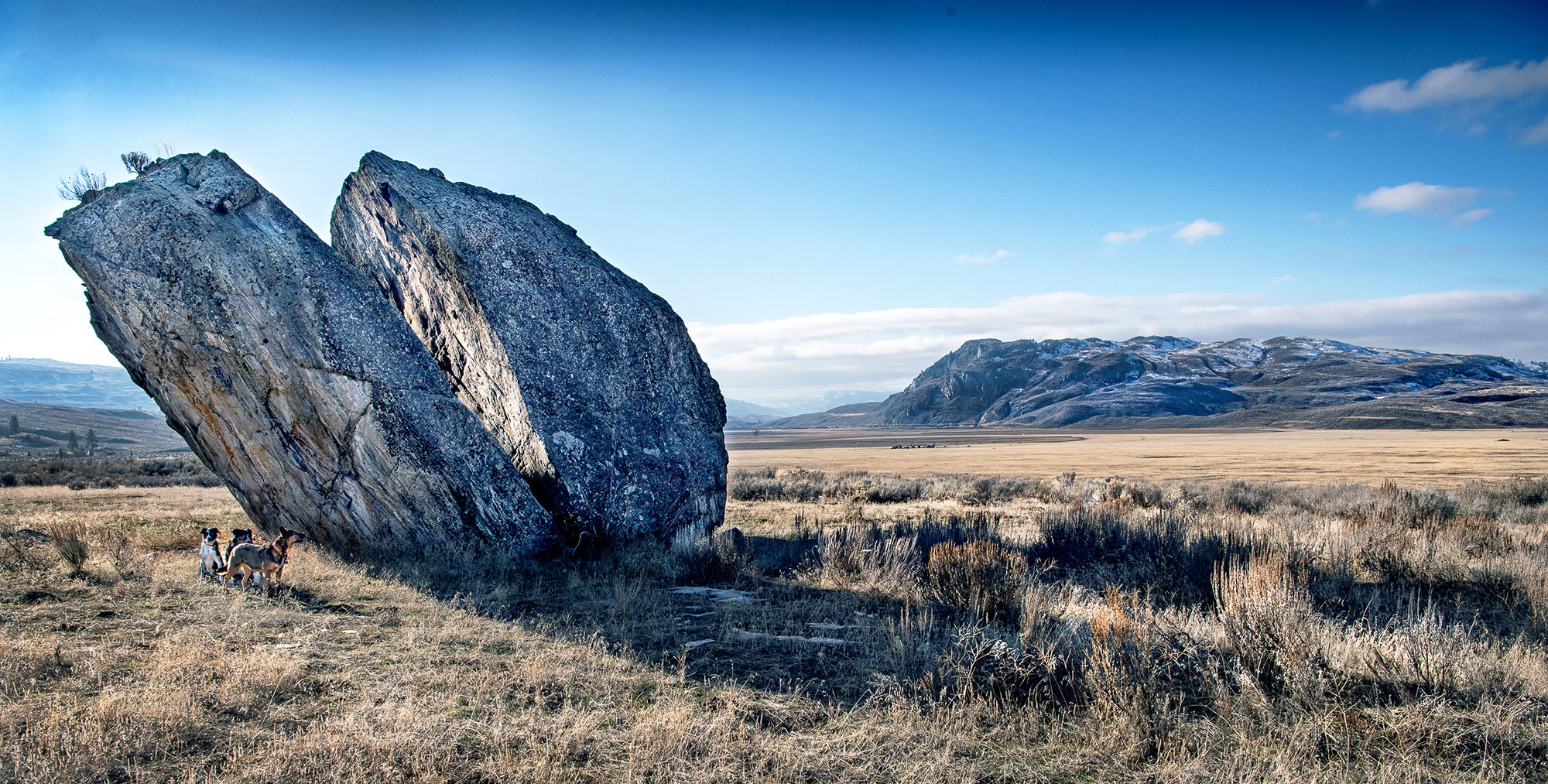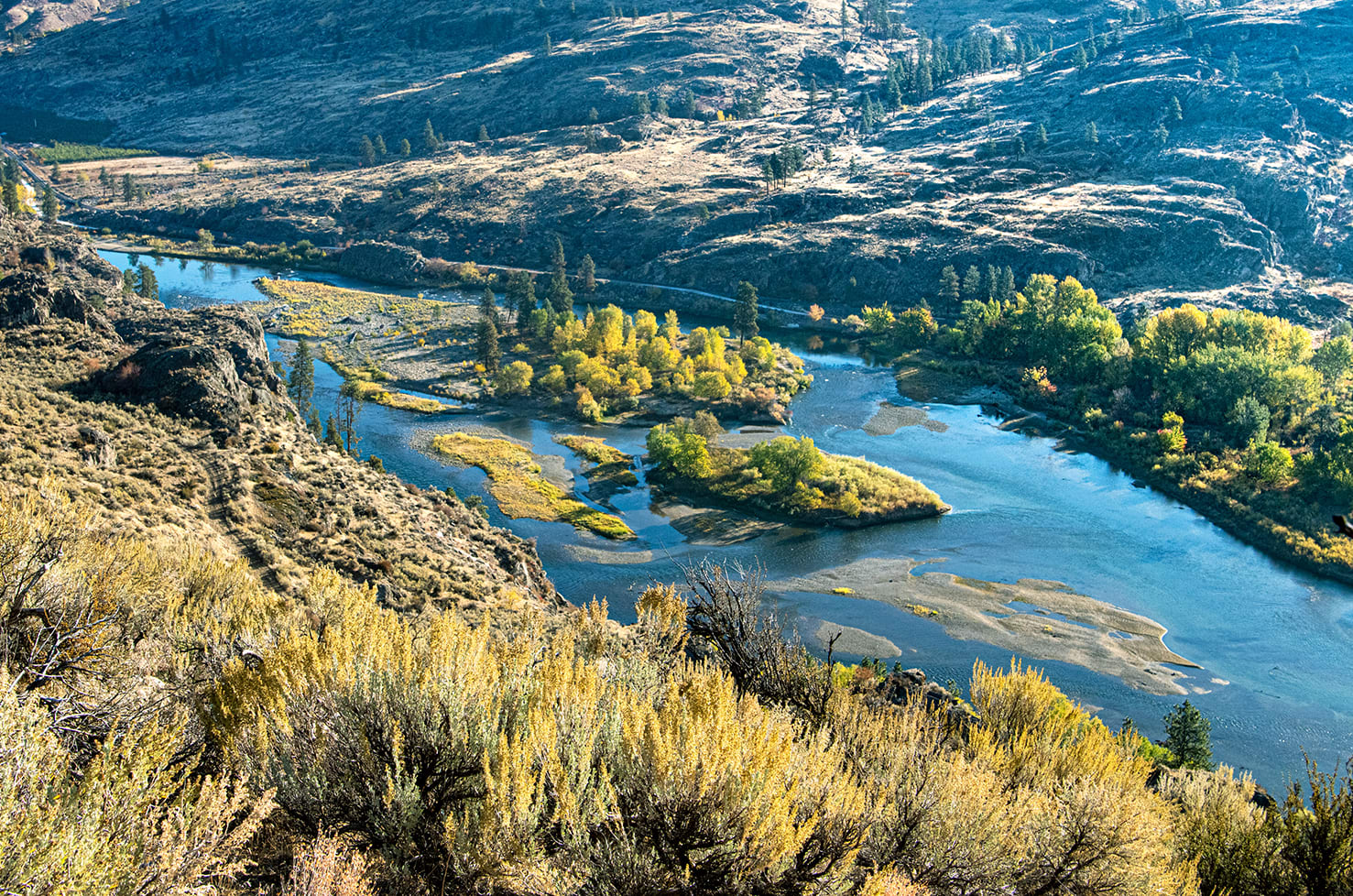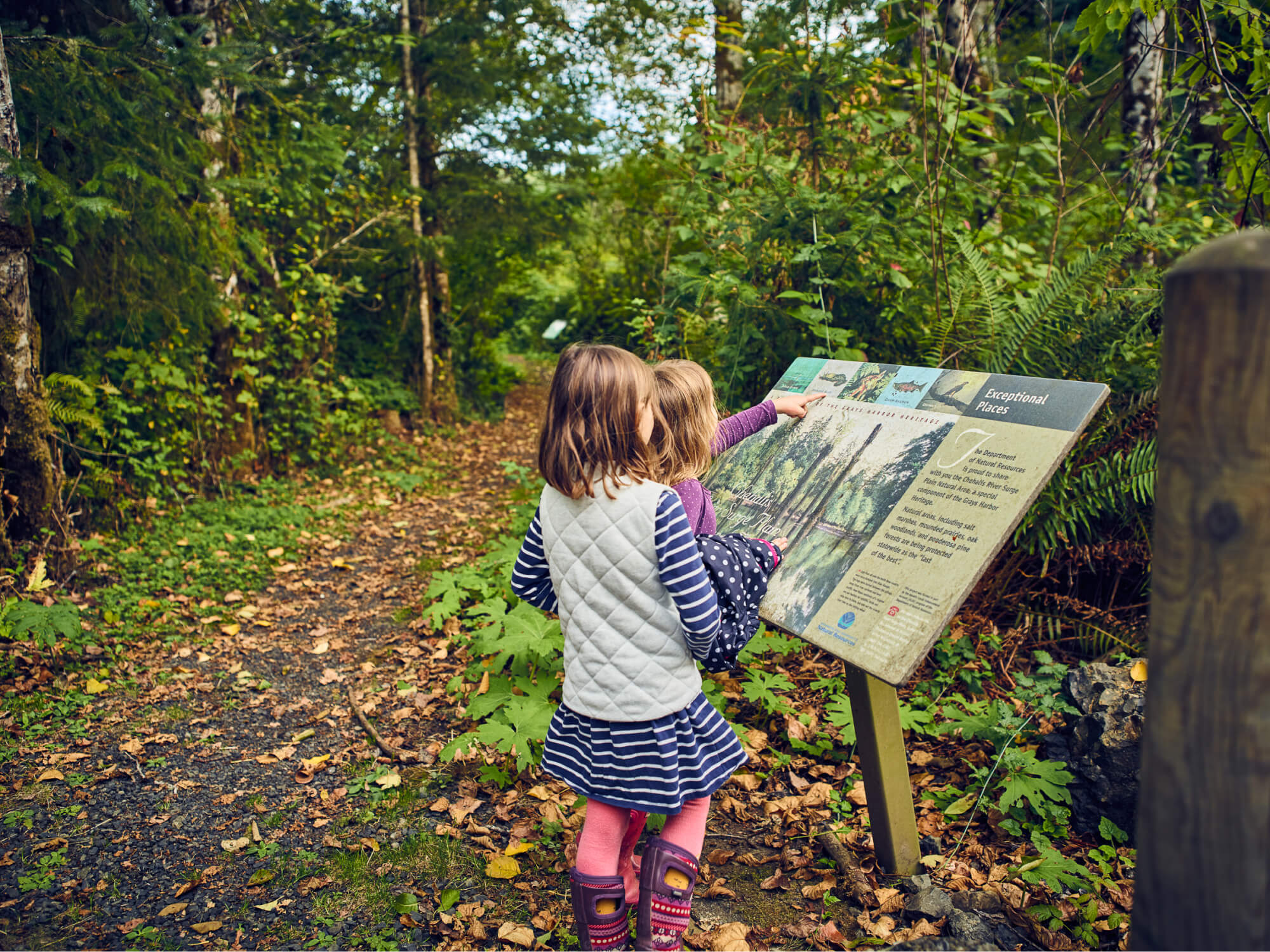Cold water and critical habitat for upper columbia steelhead
To reach their home waters in Washington, Upper Columbia River steelhead swim more than 500 miles, overcome nine Columbia River dams and finally enter the tributary streams of the state’s arid interior. After Wells Dam, they reach the Okanogan River valley, which stretches out like a broad welcome mat of winding rivers, sagebrush-covered slopes and lofty peaks extending clear into Canada.
Here, steelhead face a new challenge: water. In fertile Okanogan County, farms draw heavily from tributary streams like Antoine Creek, leaving flows too low and warm for steelhead to spawn. Today, Upper Columbia River steelhead, including a distinct population unit on the Okanogan River, are federally threatened.
No one knows the challenges these fish face better than the Confederated Tribes of the Colville Reservation, which have inhabited Okanogan Country for millennia. For a decade, the tribes have set their sights on buying a large ranch along Antoine Creek, a tributary of the Okanogan River. With cold water and critical steelhead habitat, Antoine Creek presents a tremendous opportunity to restore a lifeline for Upper Columbia steelhead.
An innovative approach to water management
To usher this vision forward, Western Rivers Conservancy purchased the 2,524-acre Antoine Valley Ranch in late 2020 with a grant from the Washington Streamflow Restoration Program and support from The David and Lucile Packard Foundation. We transferred half of the ranch to the Colville Tribes and held the second half while working to raise the remaining funds needed to transfer the property to the Colville Tribes. In September 2023, after successfully securing funding through the Streamflow Restoration Program, we conveyed the second half of the property into Colville ownership.
Conveyance of Antoine Valley Ranch includes Fanchers Dam, Washington’s second largest earthen dam and the key to reviving Antoine Creek. The dam sits on a separate upstream parcel, above natural barriers to steelhead. Because it does not impede steelhead migration, it will be left in place so tribal fishery managers can use it to strategically pulse cold flows downstream when fish need water the most.
This strategy will provide flow increases of up to 90 percent in Antoine Creek, calibrated to match seasonal needs of the steelhead that spawn in the stream. Importantly, the flow improvements in Antoine Creek will continue downstream into the Okanogan and Columbia Rivers.
Restoring habitat for charismatic wildlife
The Colville Tribes also plan to restore the riparian land and streambeds along the portion of the creek that flows through the ranch, improving steelhead spawning and rearing areas. Elsewhere on the property, the goal is to replant the ranch’s farm fields with native vegetation and restore extensive sagebrush grasslands, while keeping some of the non-riparian lands in managed grazing. This new management regime will benefit threatened Columbian sharp-tailed grouse, migratory birds, mule deer, Rocky Mountain elk, as well as animals that rely on the land as a migratory corridor between the Cascade Range to the west and the Kettle Crest to the east.
WRC’s efforts at Antoine Creek received pivotal support from Trout Unlimited. Our purchase of Antoine Valley Ranch was made possible by the Washington Department of Ecology’s Streamflow Restoration Grant Program.
